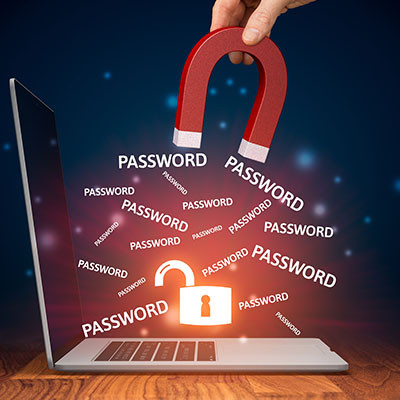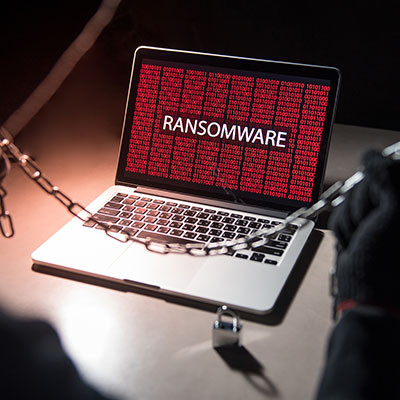Unfortunately, cybersecurity is one of the most important topics to consider in today’s business world. A recent survey has shown that the majority of security leaders—approximately 67% of those surveyed—don’t know what caused a cybersecurity incident at their business. This is a shockingly high number that cannot be ignored, so let’s look at why data breaches are so challenging to identify and address.
PCSOFT Blog
That’s not hyperbole. This isn’t some click-bait title to try to get you to care about cybersecurity. A password you use has certainly been stolen, and statistically, more than one of your passwords has likely been compromised.
How this affects you depends on a number of factors, so let’s get into that, and talk about how you can protect your identity, your business data, your customers, and prevent a whole lot of problems.
As cyberthreats become more advanced, businesses must take proactive steps to address them. Cyberattacks can have devastating effects, making it crucial to enhance employees’ awareness of online threats. This month, we examine the top three IT security challenges businesses face and how to combat them effectively.
Imagine this scenario: amidst your daily routine, an email arrives in your inbox, seemingly from a cybersecurity company. The alarming assertion is that you've become the target of a hacking attack. Despite lacking IT expertise and being unfamiliar with your security agency's procedures, you trust the message and respond promptly. Unbeknownst to you, the email is a shrewdly disguised cyberthreat, ensnaring you in their trap.
Data security is one of those things that you have to stay out in front of. Hackers and scammers are changing tactics and getting a little more sophisticated as time goes on and it creates a pretty difficult situation for most IT administrators. Utilizing multi-factor authentication (MFA), two-factor authentication, or whatever it is called by the application you are using has become a great way to add an extra layer of security to organizational data protection efforts. Today, we will discuss the benefits of this strategy and why it isn’t a be-all, end-all to your overall security.
It should come as no surprise that one of the biggest online retail days of the year also incites a lot of scams and threats targeting not just consumers, but online businesses as well. Let’s go over some of the major statistics surrounding online retail scams and what you should know as you navigate the post-holiday chaos.
Social media has become deeply ingrained in today’s culture, from business to personal connection. Businesses stake their reputation on the platforms, and individuals and families use them to connect with one another in ways they never were able to before. This is why it’s so scary to think about what would happen if an account were hacked or taken over.
Let’s look at how social media hacks are disruptive and potentially catastrophic to a business owner.
When it comes to who is victimized in cybercriminal efforts, there may be a few stereotypes and presumptions that a lot of people may hold. A recent report, Oh, Behave!, released by the National Cybersecurity Alliance and Cybsafe, shows that the real victims of many forms of cybercrime aren’t who many would expect.
Modern businesses depend on cybersecurity to help keep operations from being targeted by hackers and other cybercriminals. Businesses need to be both resilient and agile in how they protect their infrastructure from these threats. Let’s discuss four of the most important ways your business can protect itself from the growing threats of malware, ransomware, phishing attacks, and other cybersecurity threats.
World Password Day is indeed a thing, and it’s a thing to celebrate in the world of business technology, as it celebrates password awareness and advocates account security in a time when cybersecurity has never been more important. To help you observe World Password Day, we want to go over why passwords are important and why you need to take password security seriously.
We focus a lot of our attention on securing our clients’ computing infrastructures from the large amount of threats that are out there. We look to legitimately protect the entire network and infrastructure with our tools and expertise. The hackers, on the other hand, understand that they are more apt to be successful if they target certain users of your organization. Let’s look at a potential profile of someone that a savvy hacker would like to target.
Bad news for T-Mobile users, they’ve suffered another data breach. Hackers have gained access to customer data for nearly 37 million individuals, including both pre-paid and subscription-based accounts. Let’s look at what has happened and what knowledge you might apply to your own network security practices.
Back during the holiday season, the Federal Trade Commission shared some data that showed that members of Generation X, Millennials, and Generation Z are all more likely to fall for online shopping scams than those over the age of 60…and not by a little, either. Those under that age are apparently 86 percent more likely to fall for these scams.
Cybersecurity definitely needs to be a point of emphasis for any business who relies on technology, after all if you suffer a data breach, it can have a direct impact on the way your business is viewed by potential customers or it can even have an effect on the way that you are able to operate. In order to keep your business secure online you need to depend on your staff. Like it or not, they are a major part of your business’ cybersecurity system and if they aren’t trained properly and understand their role, your business is low-hanging fruit for hackers.
As one of the world’s most popular messaging applications, WhatsApp is a well-known tool, even in the business world. More notable is that WhatsApp—a platform known for its end-to-end encryption and security—now has a modified and unofficial version called YoWhatsApp, which has been deploying malware to unsuspecting users.
There’s nothing more intriguing than finding a random USB drive while cleaning up your office or while out and about. You might feel the urge to plug it in and discover its contents, but we are here to tell you that this is often a bad idea—particularly if the drive is unfamiliar to you. Unlike cloud storage, which is quite transparent, you don’t know what’s on a USB drive until you plug it in, and it’s often too late by the time this happens.
We apologize for the pun, but we couldn’t help ourselves.
When you go about your business and attempt to onboard a new client or implement a new tool for your company, you spend time getting to know what your business is doing and why. Well, a newly formed ransomware group will spend up to two weeks mapping your network before launching its attacks, making it a potent threat actor that you should keep an eye out for on your business network.
In today’s world of cyberattacks and cybercriminals, it’s more important than ever that you are taking the appropriate steps to protect your organization from all manners of threats. We have a list of cybersecurity best practices that you should consider following for your organization’s computing infrastructure. Let’s take a look.




















